A Blue Origin, the private spaceflight company founded by billionaire Jeff Bezos, launched NASA experiments, student art projects and thousands of postcards from kids on a suborbital trip to space today (Dec. 11).
The company’s reusable New Shepard spacecraft and rocket launched the NS-12 mission today after a 24-hour delay due to bad weather. Liftoff today occurred at 12:53 p.m. EST (1753 GMT) from Blue Origin’s West Texas launch site.
“Welcome back, New Shepard,” Ariane Cornell, Blue Origin’s director of astronaut and orbital sales, said during launch commentary. “A beautiful launch to space and back.”
Blue Origin originally aimed to launch New Shepard at 10 a.m. EST (1300 GMT) today, but pushed the launch back repeatedly due to heavy fog near the launch site. The company also briefly paused the countdown several times for final checks, including one just 20 seconds before liftoff. But the rocket ultimately liftoff off, reaching a maximum altitude of 343,061 feet (104,564 meters). That’s about 65 miles (105 kilometers).
Video: Watch New Shepard Land After Record 6th Flight!
Related: ‘The Expanse’ Cast Just Visited Blue Origin. Here’s What Happened

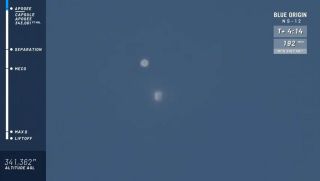
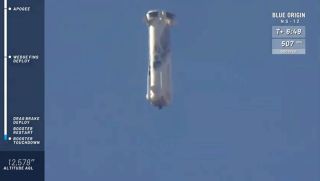
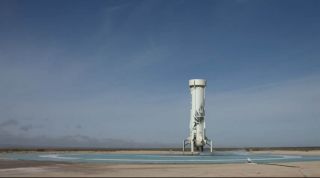
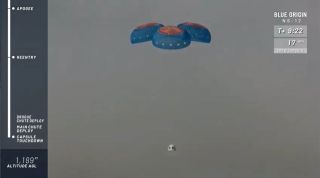
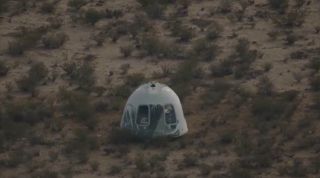
This was the rocket’s first flight to space in seven months. It last launched in May, when it carried 38 science experiments to space. Today’s launch also marks a sixth spaceflight for this vehicle, making it Blue Origin’s most-flown booster and space capsule. The previous record was five flights, the company said.
New Shepard is carried a number of science experiments to suborbital space on the NS-12 flight. Among them were OSCAR, a NASA investigation, named after Oscar, the famously grumpy “Sesame Street” character, that will explore recycling in space. The spacecraft is also holding a weightlessness experiment designed by students from Columbia University and a NASA investigation to examine how gene expression changes for plants in space.
There is also art on board! The capsule is carrying two art experiments for the winners of the Art in Space Contest, which was held by the band Ok Go, which asked middle school and high school students to come up with innovative art projects to launch to space.
The capsule also contains postcards from kids as part of Blue Origin’s nonprofit Club for the Future. For this project, children wrote postcards about what they think humankind’s future in space could and should look like.
Related: Art in Space Contest: A Conversation with OK Go’s Damian Kulash
New Shepard is a reusable space capsule and rocket. Currently, Blue Origin has used the launch system to fly uncrewed science experiments, art and more to space. But the company hopes to eventually use the vehicle to fly paying tourists on suborbital spaceflights, reaching a maximum altitude of 307,000 feet (93,573 m).
The 1-stage rocket stands at 60 feet (18 meters) tall and, with 530 cubic feet (15 cubic meters) of volume in the spacecraft, the vehicle’s capsule is estimated to hold 6 people. Those first passenger flights could begin in 2020.
“We’ve got a couple of more flights before we get there,” Cornell said.
Follow Chelsea Gohd on Twitter @chelsea_gohd. Follow us on Twitter @Spacedotcom and on Facebook.







